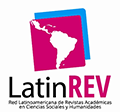BURNOUT'S SYNDROME IN THE NURSING STAFF OF INTENSIVE CARE IN A HOSPITAL OF MONTEVIDEO CITY.
DOI:
https://doi.org/10.22235/ech.v3i1.628Keywords:
Nursing. Burnout's syndrome. Emotional exhaustion. Depersonalize. Personal achievement. Intensive Care Unit.Abstract
The aim of this research was to learn about the prevalence of the Burnout'Syndrome and the levels of emotional exhaustion, depersonalize and personal achievement in the nursing staff of an Intensive Care Unit in a
public Hospital in Montevideo. A quantitative, descriptive and transverse investigation was carried out in a sample taken by convenience to a whole of 69 employees of the the nursing staff (Graduates and Assistants). A self-managed questionaire was used to distinguish the population and the Maslach Burnout Inventory instrument personal achievement. The results showed an average of 24% of Burnout's Syndrome prevalence in the inquired population. The
emotional exhaustion level was high in an average of 33% of the inquired staff, medium in the 32%, and low in the 31% of them. The depersonalize showed low levels in the majority of the inquired population, shown by the 47% of them. The majority of the staff showed a high level of low personal achievement. These results only get us closer to get in touch wiht the problem and they evidence the need to study this topic deeply, not only from quantitative methodoligy but also
from the qualitative one to get some knowledge that helps us to create strategies to face this problem.
Downloads
References
Silveira Rondán Nahir. Un Modelo de Triangulación Cuali- Cuantitativa. Editorial: Psicolibros- Waslala. Montevideo 2008.
Gil-Monte P. El síndrome de quemarse por el trabajo (síndrome de burnout) en profesionales de enfermería. Universidad de Valencia Departamento de Psicobiología y Psicología Social. Revista Eletrônica InterAção Psy – Ano 1, nº 1- Ago 2003 – p. 19-33 disponible en: http://www.bvsde.ops-oms.org/bvsacd/cd49/ artigo3.pdf
Buendía J. Estrés Laboral y Salud. 2°Edición. Editorial Biblioteca Nueva. Madrid. 2006.
Maslach C., Comprendiendo el Burnout. Ciencia y Trabajo, Abril - junio 2009, (revista en Internet) (acceso 22 noviembre de 2012). Disponible en: http://www. cienciaytrabajo.cl/pdfs/32/C&T32.pdf.
Lorente L., Salanova M., Martínez. S. Estrategais de Prevención del Burnout desde los Recursos Humanos. Revista en Internet Gestión Práctica de Riesgos Laborales. Acceso 8 de marzo de 2013. Disponible en: http://pdfs.wke.es/8/5/9/2/pd0000018592.pdf
Gil-Monte P., Peiró J., Universidad de La Laguna y Universidad de Valencia. Validez factorial del Maslach Burnout Inventory en una muestra multiocupacional (Revista en Internet) 1999. (acceso el 14 de mayo de 2013). Disponible en:
www.unioviedo.es/reunido/index.php/PST/.../7415.
Grau E. Universitat de València. España. El Síndrome de quemarse por el trabajo (burnout) en profesionales de enfermería: un estudio longitudinal Servei de Publicacions 2008. (publicación en Internet).(acceso 15 de mayo de 2013). Disponible en: http://roderic.uv.es/bitstream/handle/10550/15417/grau.pdf?sequence=1
Manso J. Universidad de Concepción. Chile. Confiabilidad y validez factorial del Maslach Burnout Inventory versión Human Services Survey en una muestra de asistentes sociales chilenos.Octubre/2006 (revista en Internet) citado el 10 de abril de 2013. Disponible en:http://www.psicologiacientifica.com/maslach-burnoutinventory-confiabilidad/
Hernández C. Vargas S. Rodríguez A. UAEM. México. Burnout en personal sanitario: validación de la escala MBI en México. (monografía en Internet) citado 10 de abril de 2013. Disponible en: http://www.uji.es/bin/publ/edicions/jfi16/psisoc/3.pdf
Aranda B. El Síndrome de Burnout o de quemarsen en el trabajo: un conflicto en la salud de los profesionales. Rev. investig. psicol. [online]. dic. 2011, vol.14, no.2 [citado 03 Marzo 2013], p.47-56. Disponible en la World Wide Web: <http://revistas.concytec.gob.pe/scielo.php?script=sci_arttext&pid=S1609-74752011000200004&lng=es&nrm=iso>. ISSN 1609-7475.
Barraza M., Carrasco R., Arreola M. Síndrome de Burnout: un estudio comparativo entre profesores y médicos de la ciudad de Durango. Enero de 2007.[página en Internet]. [acceso 11 de marzo de 2013]. Disponible en: http://www.upd.edu.mx/librospub/inv/sinburnout.pdf.
Mingote A, Pérez S. Estrés en la Enfermerái. El cuidado del cuidador. Ediciones Díaz de Santos S. A.Madrid; 2003.
Consejo Internacional de Enfermeras. Definición de Enfermería. (acceso 20 de octubre 2012). Disponible en:http://www.icn.ch/spanish.htm.
Cirera Osvaldo. Y, Aparecida Dias E, Rueda Elias Spers V, Ferraz Filho O. Impacto de los estresores laborales en los profesionales y en las organizaciones análisis de investigaciones publicadas. Invenio 2012; 1567-80. (citada 20 de abril de 2013) Disponible en: http://www.redalyc.org/articulo.oa?id=87724146007.
Zambrano Plata Gloria Esperanza. Estresores en las unidades de cuidado intensivo. Aquichán [serial on the Internet]. 2006 Oct [cited 2014 May 10] ; 6(1): 156-169. Available from: http://www.scielo.org.co/scielo.php?cript=sci_arttext&pid=S1657-
&lng=en.
Bresó E., Salanova M., Schaufeli W. NTP 732:Síndrome de estar quemado por el trabajo "Burnout"(III): Instrumento de medición. Acceso 3 de marzo de 2013. Disponible en: http://www.ub.edu/dppss/psicamb/uni4/4821.htm
Añon [et al]. Incidencia del Síndrome de Burnout en un Hospital Público de Montevideo Psicología, Conocimiento y Sociedad. [Revista en internet] 2012 Mayo [acceso 2 de mayo de 2013]; 2 (1), 130 – 148. Disponible en:www.http://revista.psico.edu.uy.
Frade M.J.; Vinagre G.; Zaragoza I.; Viñas S.; Antúnez E.; Álvarez S.; Malpartida P. Madrid. Síndrome de burnout en distintas Unidades de Cuidados Intensivos.(Revista en Internet). Enferm Intensiva.2009; 20(04) :131-40 - vol.20 núm 04. Citado 12 de junio de 2013. Disponible en: http://www.elsevier.es/es/revistas/enfermeria-intensiva-142/sindrome-burnout-distintas-unidadescuidados-intensivos-13146019-originales-2009.
Downloads
Published
How to Cite
Issue
Section
License
Copyright (c) 2015 Enfermería: Cuidados Humanizados

This work is licensed under a Creative Commons Attribution 4.0 International License.

















